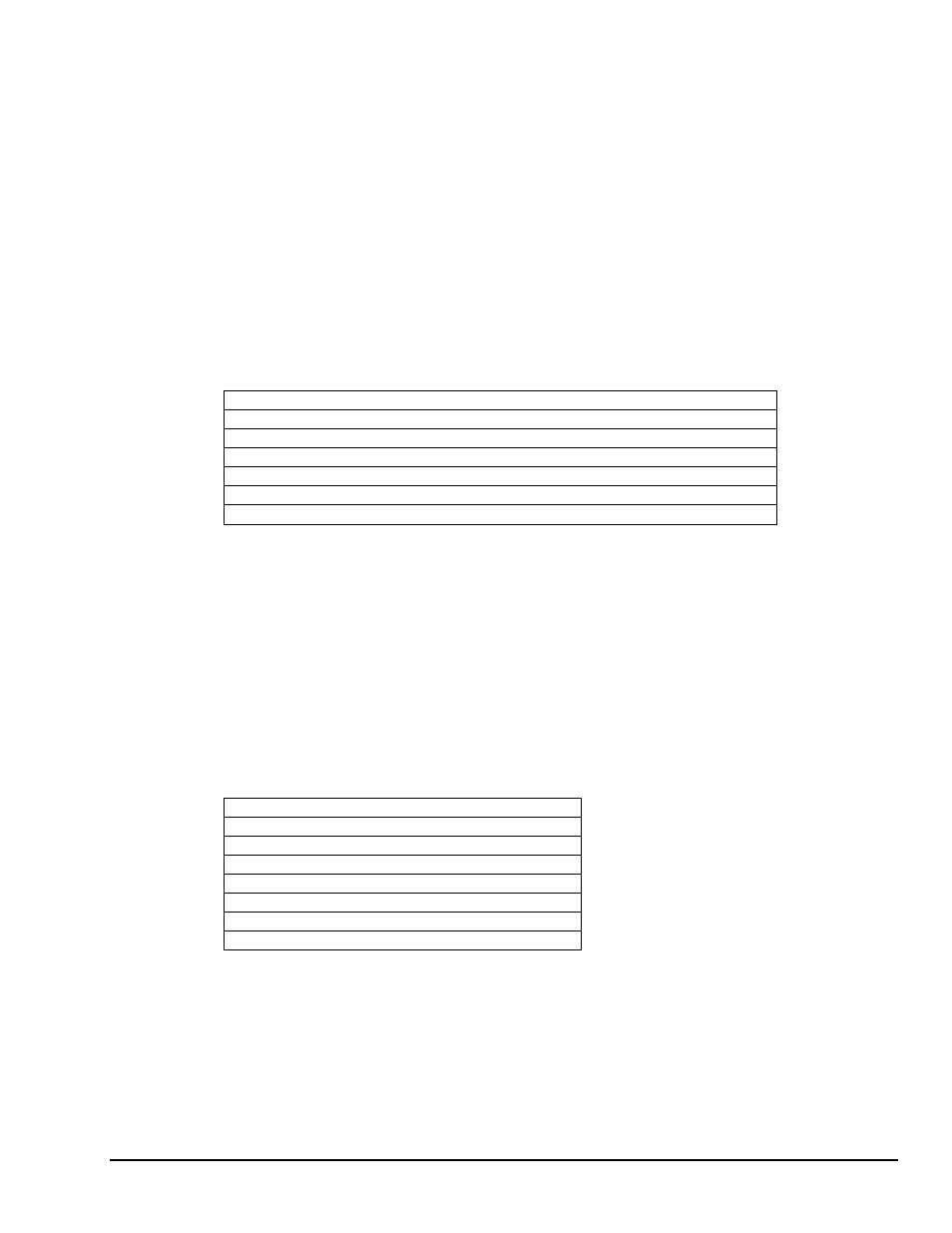Input impedance, Noise rejection, Datashuttle noise rejection – Measurement Computing DataShuttle User Manual
Page 33: Common mode range, Input protection, Resolution/scan rate, Datashuttle-16 resolution and scan rate

DataShuttle and DynaRes
11-13-01
DataShuttle - Technical Notes 2-15
RTD Conditions – Same as General Conditions. Does not include the accuracy of the RTD sensor itself.
Includes linearization and signal conditioning errors.
Assumes 16-bit resolution is in use for the DataShuttle-16.
RTD measurements are on the 0-50 mV range.
Input Impedance
All analog inputs have an impedance rating of >20M
Ω
Noise Rejection
Important: All noise measurements are in low noise mode, with inputs shorted to COM.
CMRR – Common Mode Rejection Ratio (CMRR) is >80dB under these conditions: DC to 100 Hz,
common mode input ± 7.0 Volts channel to ground. This specification applies even when one or more
nonmeasured channels exceeds the operating common mode range.
DataShuttle Noise Rejection
Range
Typical Internal Noise (RMS)
50 mV
0.5 µV
± 25 mV
0.5 µV
500 mV
4 µV
± 250 mV
4 µV
10 V
50 µV
± 5 V
50 µV
Common Mode Range
Operating, channel-to-ground – ±7 Volts
Nonoperating – ±50 Volts continuous.
Input Protection
On analog input channels: 50 Volts continuous; 150 Volts momentary.
Resolution/Scan Rate
Both resolution and scan rate are selectable in software
DataShuttle-16 Resolution And Scan Rate*
Resolution
Scan Rate
low noise mode: 0.0015 %
45 / 55 Hz
16 bits: 0.0015 %
200 Hz
15 bits: 0.003 %
330 Hz
14 bits: 0.006 %
500 Hz
13 bits: 0.0012 %
700 Hz
12 bits: 0.024 %
900 Hz
10 bits: 0.1 %
1400 Hz
* Rates describe an IBM PC 486DX2 running at 66 MHz under Windows 3.1;
tolerate error = 1 in DASYLab. Rates are somewhat faster in faster computers.
Also see the discussion of “Dynamic Resolution,” on page 1-2.
